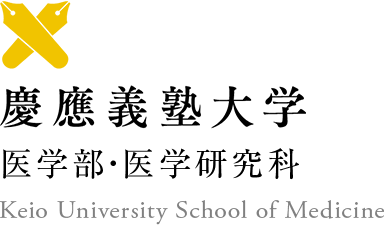- Home
- Features Index
-
Features
Features
Expanding Patient Access to Cancer Genomics
2025/06/18
Cancer genomics involves analyzing the genetic mutations that cause cancer, using these insights to support diagnosis and treatment. Keio University Hospital was among the first in Japan to introduce genetic panel testing in 2017. In February 2018, it was designated by the Ministry of Health, Labour and Welfare as a Core Hospital for Cancer Genomic Medicine. Here, we speak with Professor Hiroshi Nishihara, Director of the Center for Cancer Genomics, about his commitment to shaping the future of cancer genomics. From driving research to building clinical and diagnostic systems, Prof. Nishihara is leading efforts to advance this field across Japan.
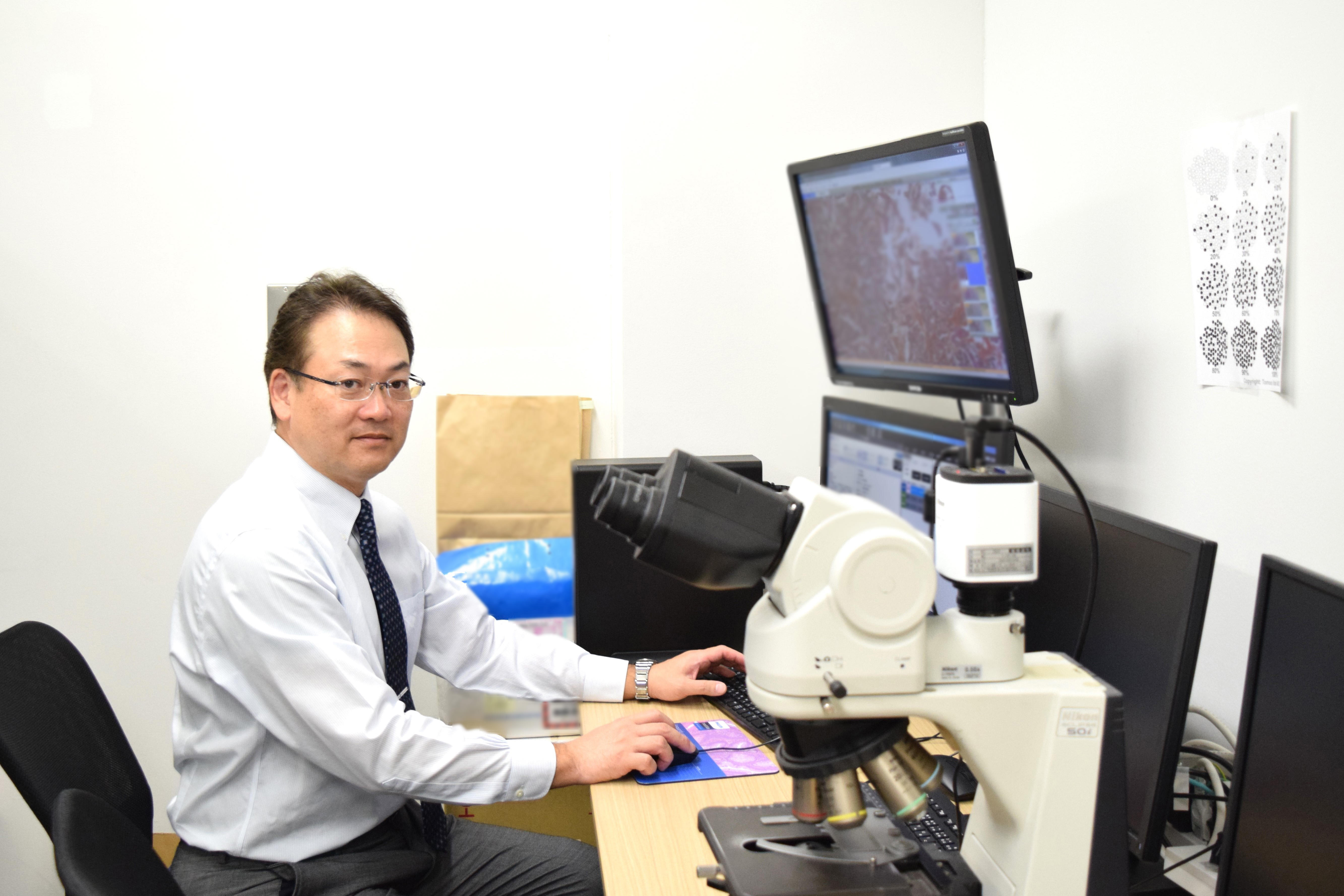
Treating Cancer Based on Genetic Mutations: The Role of Cancer Genomics
Cancer is caused by genetic mutations—changes that disrupt normal cell function. In recent years, researchers have discovered a growing number of cancer driver genes, mutated genes that promote the development and growth of cancer and have developed therapies that specifically target them. Unlike conventional approaches that base treatment on the cancer’s location in the body, cancer genomics determines therapy based on specific genetic mutations identified through genomic testing.
Keio University Hospital has been at the forefront of cancer genomics since November 2017, when it established a Genomics Unit within its Cancer Center and introduced gene panel testing to examine hundreds of genes simultaneously. Prof. Nishihara, Director of the Center for Cancer Genomics, helped build this framework and has been a pioneer in cancer genomics since around 2014, when he began his work at Hokkaido University.
“Since June 2019, cancer gene panel testing using next-generation sequencers has been covered by Japan’s national health insurance system. However, access is limited to patients with cancers of unknown primary origin, rare cancers, or solid tumors for which standard treatments have been completed and no further options remain. As a result, only 10,000 to 20,000 people receive testing each year. With one million people diagnosed with cancer in Japan each year, that means only 1–2% undergo testing, a stark reflection of the current limitations in Japan’s cancer genomics landscape.”
Even when panel testing is performed, genetic mutations may not be found, or they may be found but lack corresponding treatments. In fact, only about 10% of those tested have been able to receive treatment based on their results, which amounts to just 1,500 people per year nationwide. Prof. Nishihara emphasizes the urgent need to change this situation.
“Right now, only a small number of patients—those with no treatment options left—can access cancer gene panel testing. As a result, even if a specific treatment is recommended, it often comes too late to help. Some patients may have lived longer if they had received genomic testing earlier and been given treatment based on their genetic mutations. That’s why our hospital now offers a proprietary testing system, developed in-house, to expand access to cancer genomics for more patients.”
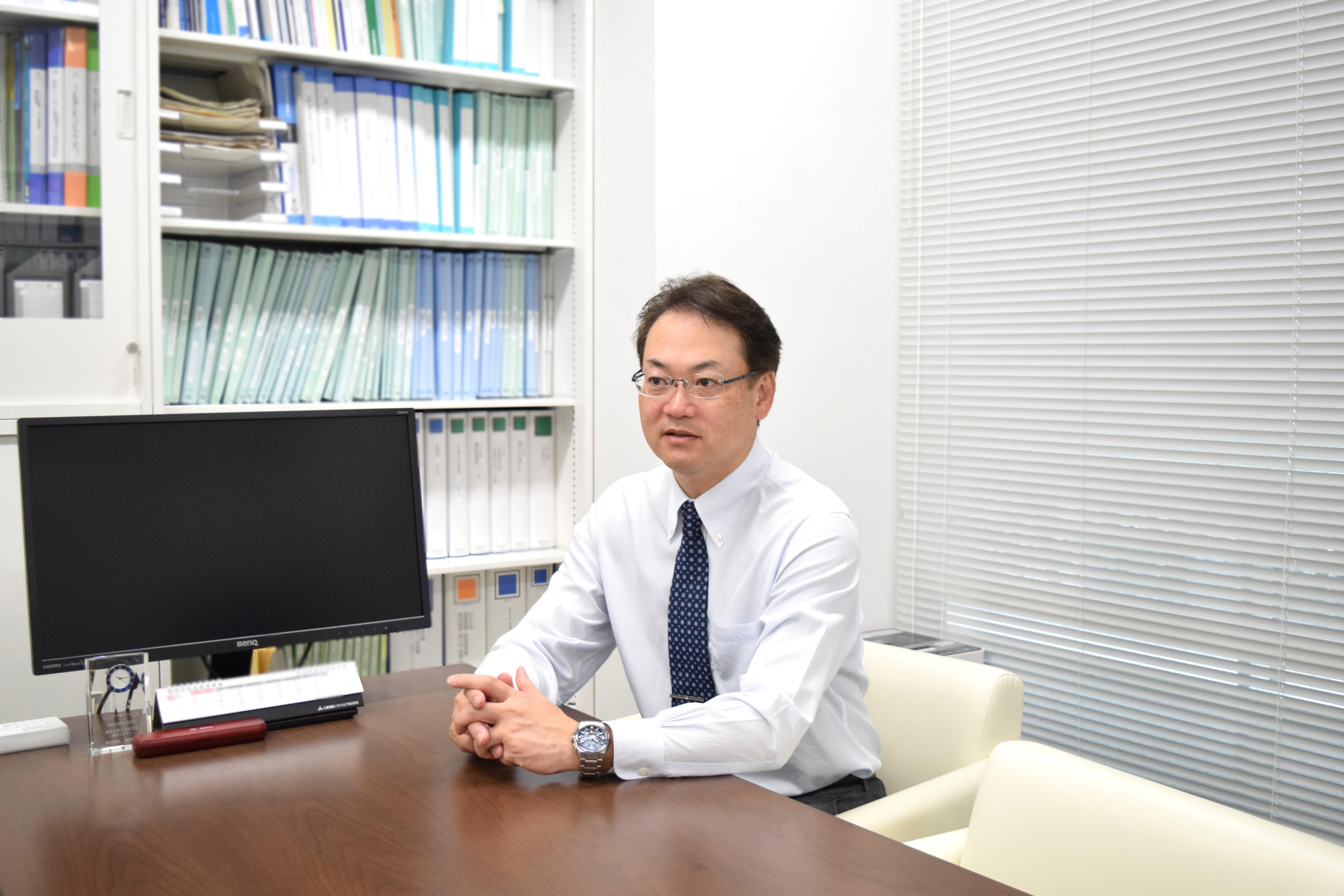
Keio’s Unique Cancer Genomics Testing Platform
As of February 1, 2025, cancer gene panel testing is available at 13 “Core Hospitals for Cancer Genomic Medicine,” 32 “Designated Hospitals for Cancer Genomic Medicine,” and 232 “Cooperative Hospitals for Cancer Genomic Medicine” across Japan. Keio University Hospital, designated as one of these Core Hospitals, not only provides cancer gene panel testing under the national insurance program, but has also built an infrastructure for out-of-pocket testing using its own proprietary platform, broadening access for patients who do not qualify for insurance-covered tests.
“We offer self-funded genomic testing for patients not covered by insurance, or those who want a more detailed analysis. Test options include a standard panel covering 216 genes, whole exome sequencing that targets nearly all 20,000 human genes, and a liquid biopsy that screens 744 genes through a simple blood draw, eliminating the need for tissue sampling. Although these tests are expensive—ranging from several hundred thousand yen to nearly one million—they offer the potential to uncover mutations not detectable with standard panel testing.”
This proprietary platform is also helping to improve outcomes in insurance-covered cancer gene panel testing.
“With standard cancer gene panel testing, results are reviewed by an expert panel that recommends possible treatments. But even if a mutation is found, it can be difficult to identify a matching therapy. At Keio, our in-house testing infrastructure has enabled us to accumulate extensive clinical and research data. Using this data along with a proprietary algorithm, we can interpret results more proactively and present patients with a broader range of treatment options.”
More recently, Prof. Nishihara and his team began offering an advanced technique called minimal residual disease (MRD) evaluation. In this approach, blood tests before and after surgery for resectable esophageal cancer help determine whether all cancer-related genes have been removed.
“By analyzing a patient’s blood after surgery, we can check for residual cancer-cell mutations. Our research shows these mutations are linked to a high recurrence risk, allowing us to intervene early, such as by starting preventive treatment. We’re also working on a urine-based test for early detection of pancreatic cancer. Looking ahead, we hope to broaden the use of liquid biopsy—low-burden techniques using blood or urine—to make testing easier for patients.”
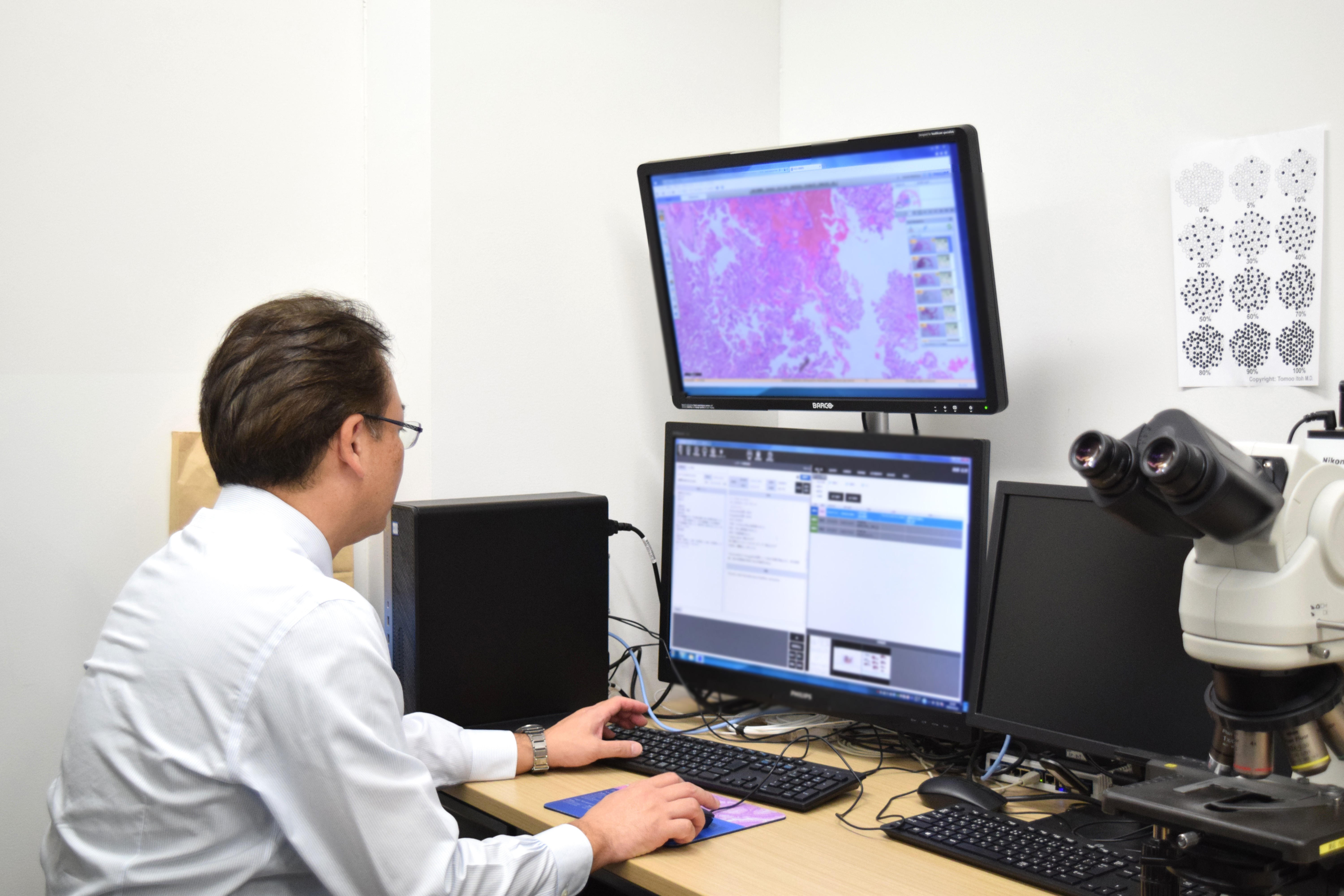
Integrating Cancer Genomics from the Start of Treatment
“Japan’s cancer genomics is falling significantly behind global standards,” says Prof. Nishihara, voicing serious concern. He argues that rather than limiting testing to patients with no treatment options left, genomic testing should be introduced at the time of diagnosis and applied throughout the course of treatment.
“We start by incorporating genomic testing into pathology at the initial cancer diagnosis, a process known as pathological sequencing, or molecular pathological diagnosis. At this stage, we evaluate tumor aggressiveness and explore potential drug therapies based on the tumor’s genetic profile. After surgery or radiation therapy, we assess for MRD at the genomic level and decide whether additional treatment is needed based on recurrence risk. In cases of recurrence or metastasis, we analyze new tumor tissue specimen and compare it with the original genetic mutations to guide treatment decisions. This genomics-informed approach is standard practice in many other countries, but in Japan, regulatory and insurance barriers have kept it from becoming mainstream.”
In June 2023, the updated international staging system for endometrial cancer, FIGO 2023, introduced molecular genetic classifications alongside conventional pathological and histological methods.
“Cancer treatment follows staging systems to determine the most appropriate evidence-based therapies at each stage. However, without genetic testing at the initial diagnosis stage, Japan cannot apply internationally aligned staging standards. Our analysis of past patient data revealed that roughly 7%—about 1,020 people—underwent unnecessary chemotherapy, while 9%—around 1,530 individuals—missed out on needed chemotherapy. Of the roughly 1,700 endometrial cancer cases diagnosed annually in Japan, about 16% are still being treated under outdated classification systems that exclude genetic testing.
The international classification for gliomas—a type of brain tumor—now combines microscopic pathological diagnosis with molecular-genetic profiling. But in Japan, classification still relies solely on traditional pathology.
“We cannot let this issue go unaddressed,” says Prof. Nishihara. “We are working with the Japanese Society of Pathology to promote the use of pathological sequencing. Our immediate priority is endometrial cancer and brain tumors, where we’re urging widespread alignment with international treatment standards.”
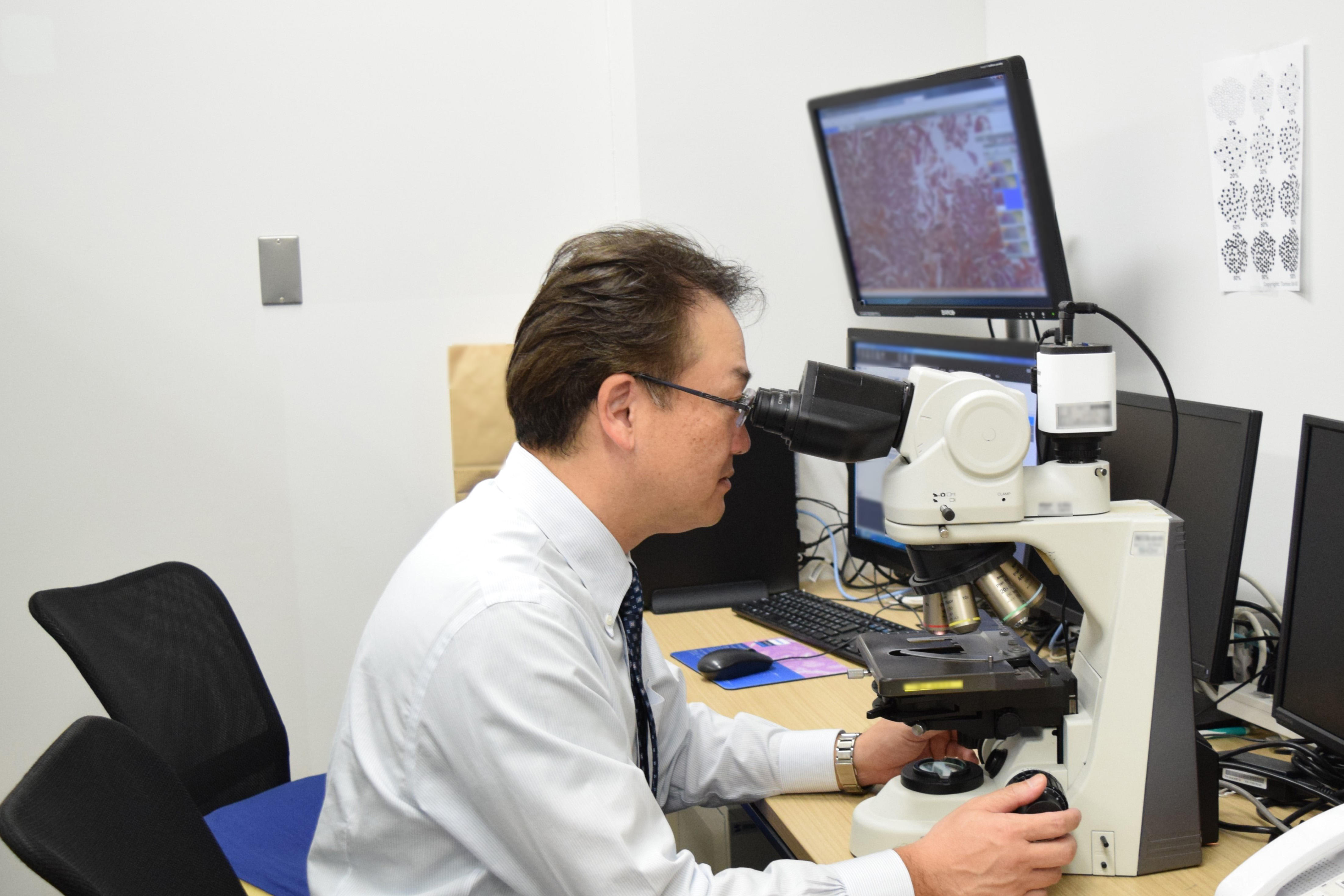
Bringing Research from Bench to Bedside: A Pathologist’s Perspective
Now a leading figure in cancer genomics, Prof. Nishihara initially pursued a career in pathology, with a strong focus on research. One phrase has guided him throughout: “bench to bedside.”
“After graduating from medical school, I conducted basic research in pathology labs, investigating oncogenes and abnormal proteins linked to cancer, with the goal of applying these findings to clinical care. That’s why I valued the idea of ‘bench to bedside.’ For a while, I spent about 80% of my time on research and 20% on clinical settings. Eventually, I saw the need to study gene mutations that could be used as therapeutic targets. That led me to create the Division of Clinical Cancer Genomics at Hokkaido University Hospital and open a specialized cancer genomics outpatient clinic. It was the first such department at a national university, and I believe it was quite rare for a pathologist to speak with patients about their results in person.”
Since joining Keio University Hospital in 2017, Prof. Nishihara has established the Genomics Unit at the Cancer Center and opened a cancer genomics outpatient clinic. He continues to advance personalized therapies based on cancer genomic alterations, while achieving significant results in basic research as well. For example, he’s exploring new driver genes using whole-exome sequencing data from roughly 1,000 cases accumulated at Keio University Hospital.
“Using whole-exome sequencing, we identified a mutation in the CRK family as a potential new driver gene. Interestingly, I was the first person in the world to identify one member of this family, DOCK2. At the time, its function was unclear. Recently, however, it has been identified as a factor in severe COVID-19 symptoms, and now, we believe it may also play an important role in cancer. We’re continuing our research in this area.”
Expanding the Possibilities of Cancer Treatment Through Genomics
“My goal remains to make pathological sequencing, which is a form of molecular diagnosis, a standard part of cancer care,” says Prof. Nishihara. His foundation in pathology remains unchanged.
“Pathologists have long based their diagnoses on microscopic observation, but now we must train specialists who can also interpret genetic profiles. That’s why the Japanese Society of Pathology launched a certification program for molecular pathologists in 2019. I served on the original exam committee and helped develop the certification process. Certified molecular pathologists can interpret genetic profiles, apply WHO classifications, and make diagnoses based on genomic mutations. In the five or so years since the program launched, the number of certified specialists has grown to roughly 700.”
Alongside specialist training, Prof. Nishihara is also building an integrated database of genomic diagnostic data and working to develop systems that incorporate molecular pathology into cancer diagnosis. These efforts, he says, are all aimed at unlocking the potential of cancer genomics and enabling better treatments.
“Japan’s current healthcare system still presents many barriers to providing treatment based on genomic mutations. But when a patient with no other options receives genomics-based treatment—and it works—I truly feel everything we’ve done has been worth it. Sadly, such cases are still very rare. Still, some patients tell me that genomic testing helped them understand their illness better. It’s in those moments that I’m reminded why this work matters—and why I must continue advocating for cancer genomics.”
Hiroshi Nishihara
Hiroshi Nishihara received his MD from the Hokkaido University School of Medicine in 1995. He earned a PhD in pathology from the university’s Graduate School of Medicine in 1999. He has held positions at the Department of Pathology at Hokkaido University Hospital, as well as at the university’s Clinical Research and Medical Innovation Center, the Division of Clinical Cancer Genomics, at the Hokkaido Cancer Center. In 2017, he joined the Keio University School of Medicine as a Project Professor. He was appointed Professor in 2019. He currently serves as Director of the Center for Cancer Genomics and Head of the Genomics Unit at Keio University Hospital’s Cancer Center.
*All affiliations and titles listed are those at the time of the interview.

